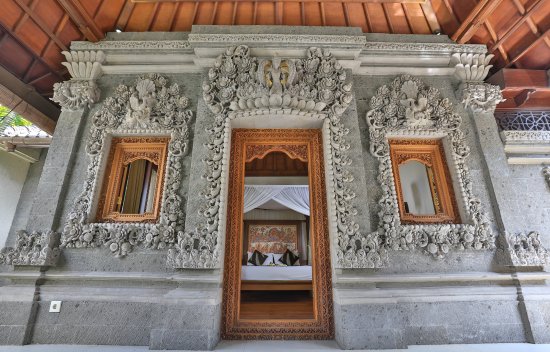Description: With a propensity for being in tune with nature, Balinese architecture has become one of the most prominent Asian tropical architectural forms. What makes it that good?

==============================================================================================
With a propensity for being in tune with nature, Balinese architecture has become one of the most prominent Asian tropical architectural forms. Bali, an island off the coast of Indonesia, is the inspiration for this look. The island’s culture, laid-back lifestyle, and abundance of great natural resources draw many travelers from all over the world.
Many people visit Bali to worship, hence the island is sometimes called “island of the gods.” There are hundreds, if not thousands, of temples in Bali. Bali’s many stunning beaches, scenic mountains, and tranquil countryside have made it a popular tourist destination and creative inspiration throughout the globe.
A Brief Introduction to Balinese Structures
Vernacular architecture, such as that practiced in Bali, emphasizes the use of readily available, inexpensive, and locally sourced materials in the design and construction of buildings, structures, and homes, all while paying homage to cultural norms and precedents. This centuries-old aesthetic takes its cues from both the Hindu traditions of Bali and the architectural styles of ancient Java.
The majority of Balinese houses and structures are constructed using natural materials including bamboo poles, coconut wood, teak wood, stone, and bricks.
Traditional aesthetic ideals are a defining feature of Balinese architecture, which incorporates the island’s long history of culture and art into every facet of its building designs.
Modern Applications of Traditional Balinese Design
Balinese design principles are seen in many of Bali’s residences, both modest and extravagant. Bali villas and exclusive resorts are the ideal accommodations, in harmony with their surroundings, since they make use of nature at its finest to create a man-made building with a laid-back and tropical vibe.
As Bali continues to rise in popularity as a premier tourist destination in Southeast Asia, more and more hotels and resorts are beginning to provide private, high-end villas to accommodate visitors. The distinctive Balinese style coupled with contemporary features has become a standard in the design of private luxury villas in Bali.
Designers and builders in Bali still prioritize the unique tenets of Balinese architecture, even if there is a clear fusion of traditional and contemporary elements in the island’s residences and private villas.
Balinese Buildings Follow These Seven Principles
Concepts fundamental to this kind of architecture are Hinduism, spatial order, and communally oriented social interactions. The following seven principles form the basis of every Balinese-style house or villa:
- Tri Hata Karana, the cultivation of peace and concord among humanity (the atma), nature (the anggas), and the divine (the khaya).
- Tri Mandala: A System for Dividing and Zoning Space
- Sanga Mandala: a set of principles for spatial division and zonation based on directions.
- Tri Angga: a theory of the relative importance of several dimensions
- Tri Loka, like Tri Annga but with various worlds, is the fifth kind of dharma.
- A set of eight rules for architectural designs pertaining to symbols, temples, stages, and measuring units is known as the Asta Kosala Kosali.
- Axis sacrosanct between mountain and sea; Arga Segara
The four Strength Aspects that are prioritized in Balinese architecture and which are based on these beliefs are:
- Balinese and other luxury villas pay special attention to ventilation by installing large windows. In addition, a sizable open area is made between the ceiling and the wall.
- In the Tri Loka view, the feet serve as a metaphor for the foundation of a home; if the feet are firmly planted on the ground, the structure will be stable and sturdy.
- A Huge Yard — In keeping with the Balinese philosophy of oneness with nature, every traditional home and villa in the island nation has a spacious yard where its residents may relax and enjoy the outdoors.
- Balinese architecture offers a high wall that may shield your home from prying eyes and protect it from harm from outsiders.







נערות ליווי
on said
I was very pleased to uncover this great site. I need to to thank you for ones time for this fantastic read!! I definitely appreciated every bit of it and I have you bookmarked to look at new information on your blog.
Extended Opportunity
on said
He Got 256,354 Free Views With AI…
Can you believe it?
People spend thousands of dollars to get that kind of result…
My friend Kundan just did it for free…
He only used his new app… AI ScreenSnap…
It’s the world’s first AI app that can generate videos with the power of Video-Exclusive AI Engine…
That can edit, record, and generate videos with just a few clicks… with zero experience…
Click here now and watch AI ScreenSnap in action https://ext-opp.com/AIScreenSnap
Extended Opportunity
on said
A.I Create & Sell Unlimited Audiobooks to 2.3 Million Users – https://ext-opp.com/ECCO
Extended Opportunity
on said
A.I Create & Sell Unlimited Audiobooks to 2.3 Million Users – https://ext-opp.com/ECCO
Extended Opportunity
on said
A.I Create & Sell Unlimited Audiobooks to 2.3 Million Users – https://ext-opp.com/ECCO